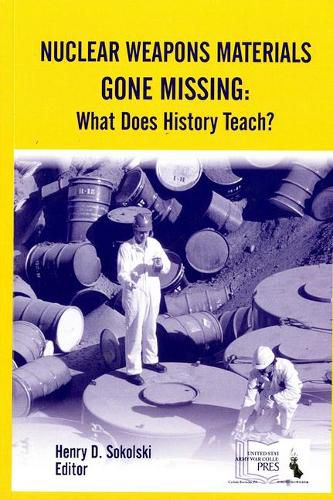In 2009, President Obama spotlighted nuclear territories as one of the top threats to international security, launching an international effort to identify, secure, and dispose of global stocks of weapons-usable nuclear materials - namely highly enriched uranium and weapons-grade plutonium. Since that time, three nuclear security summits have been held, along with scores of studies and workshops (official and unofficial), drawing sustained high-level attention to the threat posed by these materials. However, little attention has been given to incidences where sensitive nuclear materials actually went missing. This volume seeks to correct this deficiency, examining incidences of material unaccounted (MUF) for arising from the U.S. and South African nuclear weapons programs, plutonium gone missing from Japanese and British civilian production facilities, and a theft of highly enriched uranium from a U.S. military contractor in the 1960s that was used to help fuel Israel’s nuclear weapons program. This volume also questions the likelihood that International Atomic Energy Agency (IAEA) would be able to detect diversions of fissile materials, whether large or small, and the likelihood that a state could or would do anything were diversion detected. What emerges from this book is an assessment of how likely we are able to account for past MUF quantities or to be able to prevent future ones. U.S. policymakers, military analysts, and international diplomats may be interested in the findings within this document that references the absence of fissile materials and the sensitivities that surround the countries with missing materials. Related products: Medical Consequences of Radiological and Nuclear Weapons can be found here: https: //bookstore.gpo.gov/products/sku/008-023-00147-2 Building the Bombs: A History of the Nuclear Weapons Complex is available here: https: //bookstore.gpo.gov/products/sku/061-000-00968-0 Moving Beyond Pretense: Nuclear Power and Nonproliferation can be found here https: //bookstore.gpo.gov/products/sku/008-000-01098-6 Underestimated: Our Not So Peaceful Nuclear Future is available here: https: //bookstore.gpo.gov/products/sku/008-000-01175-3 United States Army in World War II: Manhattan, the Army, and the Atomic Bomb can be found here: https: //bookstore.gpo.gov/products/sku/008-029-00132-2
Read More





